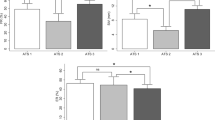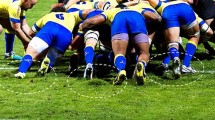Abstract
Understanding the surface hardness of soccer fields is essential to evaluate the risk of injury and also its influence on the playing behavior of soccer players. In this context, newly developed hybrid turf systems have to be tested for their surface hardness with regard to the increased risk of injury on hard sports surfaces. The hardness of a soccer field can be quantitatively measured using an apparatus with a cylindrical weight that is dropped from a defined height. Since this procedure was first used for road construction, there are few studies investigating its use on sports grounds. This has led to inconsistencies in methodology and the absence of evaluation guidelines for classifying the hardness of soccer fields. This paper considers how turf systems (natural turf and hybrid turf) differ in their hardness and how this method can be used for different soccer turf systems. Natural turf systems, stitched turf systems, hybrid turf-bearing layer systems and woven mat systems were investigated. The assessment results from a comparative representation of hardness values of different soccer fields. By comparison, natural turf systems were found to be the softest, while woven mat systems were the hardest. Furthermore, the parameters that might affect the hardness were investigated. The influence of the measured soil parameters decreases with an increasing number of measurements per measuring point. Turf system-specific correlations make it possible to reduce the amount of measurement effort.










Similar content being viewed by others
References
Saunders N, Twomey D, Otago L (2011) Clegg hammer measures and human external landing forces: is there a relationship? Int J Sports Sci Eng 05(08):231–236
Brosnan JT, Mc Nitt AS, Serensits TJ (2009) Effects of varying surface characteristics on the hardness and traction of baseball field playing surfaces. Pennsylvania
Woodward WD, Jellie JH, Woodside AR (2004) Predicting the performance of type 1 slate aggregate. Report of the HERG Project 04267. University of Ulster, Northern Ireland
Carré MJ, Haake SJ (2004) An examination of the Clegg impact hammer test with regard to the playing performance of synthetic sports surfaces. Sports Eng 7:121–129
Clegg B (1976) An impact testing device for in situ base course evaluation. ARRB Proc 8(8):1–6
Orchard J (2001) The AFL penetrometer study: work in progress. J Sci Med Sport 4(2):220–232
SD Instrumentation (2014) Clegg impact soil test. http://www.sdinst.com/. Accessed 11. Apr 2016
Al Amoudi OSB, Asi IM, Wahhab AA, Khan AZ (2002) Clegg Hammer—California-bearing ratio correlations. J Mater Civ Eng 4(6):512–523
Twomey DM, Finch FC, Lloyd GD, Elliot CB, Doyle LAT (2012) Ground hardness and injury in community level Australian football. J Sci Med Sport 15(1):305–310
Ramakrishnan KR, Wang H, Shankar K, Fien A (2017) A new method for the measurement and analysis of biomechanical energy delivered by kicking. Sports Eng 17:1–10
DessoSportsSystems (2017) Kunstrasen http://www.dessosports.com/de. Accessed 21 June 2017
EuroSportsTurf (2017) Products https://http://www.eurosportsturf.com/. Accessed 21 Sep 2017
Eurogreen BayWa (2017) Hybridrasen—CombiGrass. https://www.eurogreen.de/. Accessed 21 Sep 2017
Linde D (2005) Assessing golf course conditions in New Zealand. A benchmarking study of golf courses throughout the country allowed a New Zealand group to develop a database for advising superintendents and club managers. Golf Course Manag 73(2):110–113
Gelernter W, Larry J, Stowell J (2006) Getting a grip on greens firmness. Pace Insights. 12 (1). Turfgrass Research Institute, San Diego
Clarke J, Carré MJ (2017) The influence of gravimetric moisture content on studded shoe–surface interactions in soccer. Sports Eng 20:121–132
DIN EN 14954 (2005) Bestimmung der Härte von Naturrasen und ungebundenen mineralischen Belägen für Sportböden für den Außenbereich. Deutsches Institut für Normung, Pforzheim.
DIN EN 12231 (2003): Sportböden—Prüfverfahren—Bestimmung der Bodendeckung bei Naturrasen. Deutsches Institut für Normung, Pforzheim.
Henderson RL, Waddington DV, Morehouse CA (1990) Laboratory measurements of impact absorption on turfgrass and soil surfaces. In: Schmidt RC et al (eds) Natural and artificial playing fields: characteristics and safety features, ASTM Special Technical Publication 1073, R.C. American Society for Testing Materials, West Conshohocken, pp 127–135
DIN 18035-4 (2012) Sportplätze—Rasenflächen. Deutsches Institut für Normung, Pforzheim.
DIN EN 12235 (2013) Sportböden—Bestimmung der Ballreflexion. Deutsches Institut für Normung, Pforzheim.
DIN EN ISO 17892-1 (2014) Geotechnische Erkundung und Untersuchung—Laborversuche an Bodenproben—Teil 1: Bestimmung des Wassergehalts. Deutsches Institut für Normung, Pforzheim.
Scheffer F, Schachtschabel P, Blume HP, Brümmer GW, Horn R, Kandeler E, Kögel-Knabner I, Kretzschmar R, Stahr K, Wilke BM (2010) Lehrbuch der Bodenkunde 16. Aufl. Springer, Heidelberg.
Prinz H, Strauß R (2011) Ingenieurgeologie. Heidelberg
DIN EN ISO 17892-4 (2016) Geotechnische Erkundung und Untersuchung—Laborversuche an Bodenproben—Teil 4: Bestimmung der Korngrößenverteilung. Deutsches Institut für Normung, Pforzheim.
DIN 18128 (2002) Baugrund—Untersuchung von Bodenproben—Bestimmung des Glühverlustes. Deutsches Institut für Normung, Pforzheim.
DIN 18196 (2006) Erd- und Grundbau—Bodenklassifikation für bautechnische Zwecke. Deutsches Institut für Normung, Pforzheim.
EN ISO 14688 Teil 2 (2004) Geotechnische Erkundung und Untersuchung—Benennung, Beschreibung und Klassifizierung von Boden. Europäisches Komitee für Normung, Brüssel.
Author information
Authors and Affiliations
Corresponding author
Rights and permissions
About this article
Cite this article
Thanheiser, S.Y., Grashey-Jansen, S. & Armbruster, G. Hardness measurement of natural and hybrid turf soccer fields. Sports Eng 21, 367–377 (2018). https://doi.org/10.1007/s12283-018-0281-2
Published:
Issue Date:
DOI: https://doi.org/10.1007/s12283-018-0281-2




